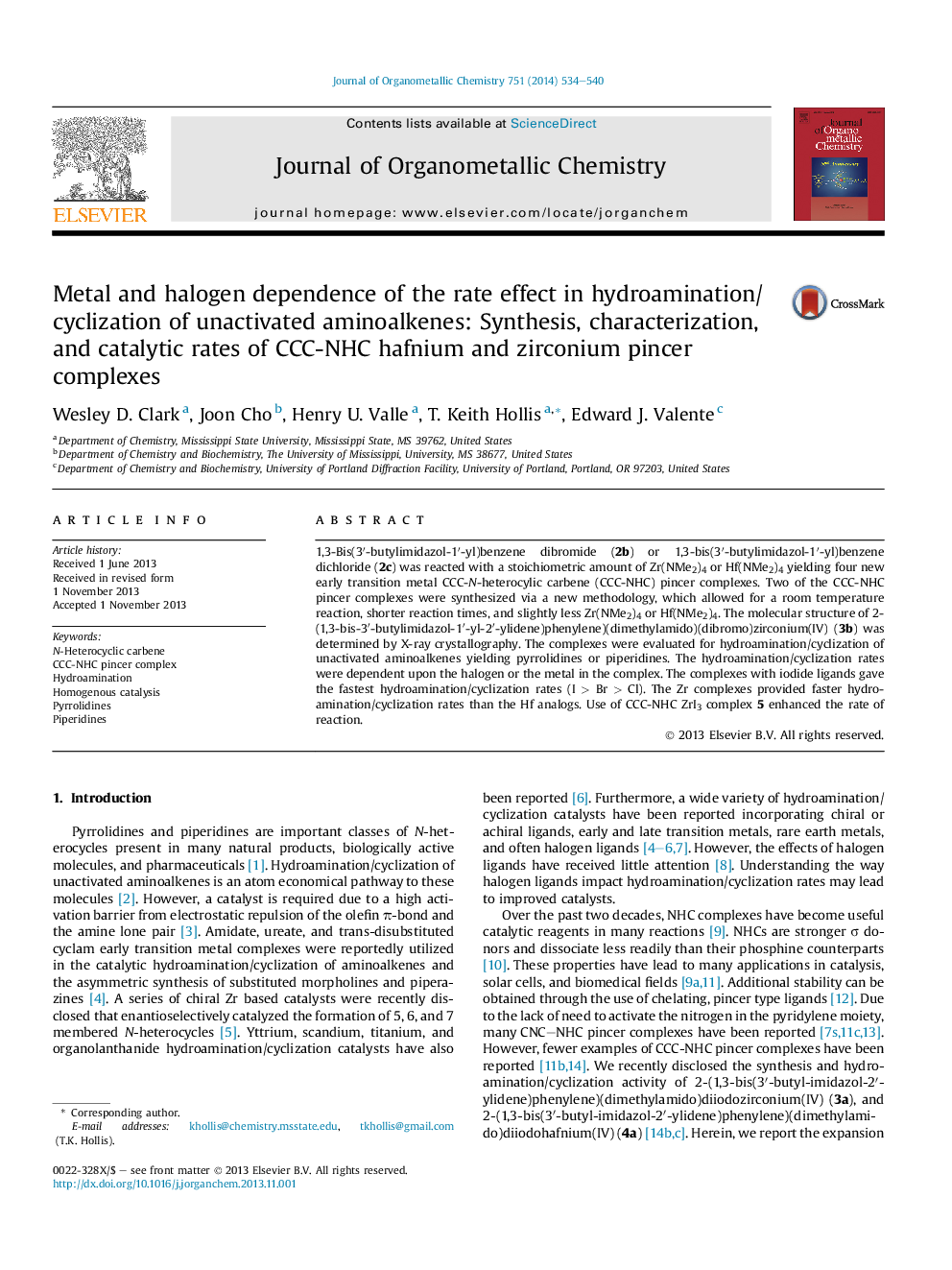| Article ID | Journal | Published Year | Pages | File Type |
|---|---|---|---|---|
| 1324310 | Journal of Organometallic Chemistry | 2014 | 7 Pages |
•Four new CCC-NHC Zr or Hf pincer complexes are reported.•Hydroamination/cyclization of unactivated aminoalkenes with the complexes was explored.•Complexes with iodide ligands gave the fastest reaction rates (I > Br > Cl).•The Zr complexes provided faster hydroamination/cyclization rates than the Hf analogs.
1,3-Bis(3′-butylimidazol-1′-yl)benzene dibromide (2b) or 1,3-bis(3′-butylimidazol-1′-yl)benzene dichloride (2c) was reacted with a stoichiometric amount of Zr(NMe2)4 or Hf(NMe2)4 yielding four new early transition metal CCC-N-heterocylic carbene (CCC-NHC) pincer complexes. Two of the CCC-NHC pincer complexes were synthesized via a new methodology, which allowed for a room temperature reaction, shorter reaction times, and slightly less Zr(NMe2)4 or Hf(NMe2)4. The molecular structure of 2-(1,3-bis-3′-butylimidazol-1′-yl-2′-ylidene)phenylene)(dimethylamido)(dibromo)zirconium(IV) (3b) was determined by X-ray crystallography. The complexes were evaluated for hydroamination/cyclization of unactivated aminoalkenes yielding pyrrolidines or piperidines. The hydroamination/cyclization rates were dependent upon the halogen or the metal in the complex. The complexes with iodide ligands gave the fastest hydroamination/cyclization rates (I > Br > Cl). The Zr complexes provided faster hydroamination/cyclization rates than the Hf analogs. Use of CCC-NHC ZrI3 complex 5 enhanced the rate of reaction.
Graphical abstractCCC-NHC Zr and Hf amido complexes of I, Br, and Cl catalyze the hydroamination/cyclization of unactivated aminoalkenes.Figure optionsDownload full-size imageDownload as PowerPoint slide
